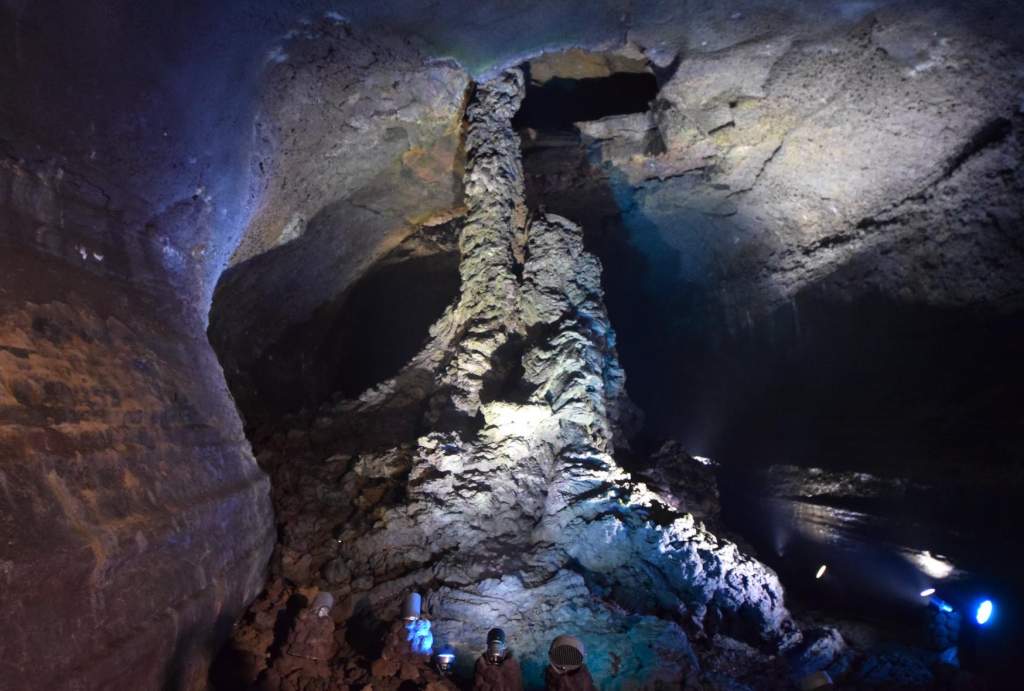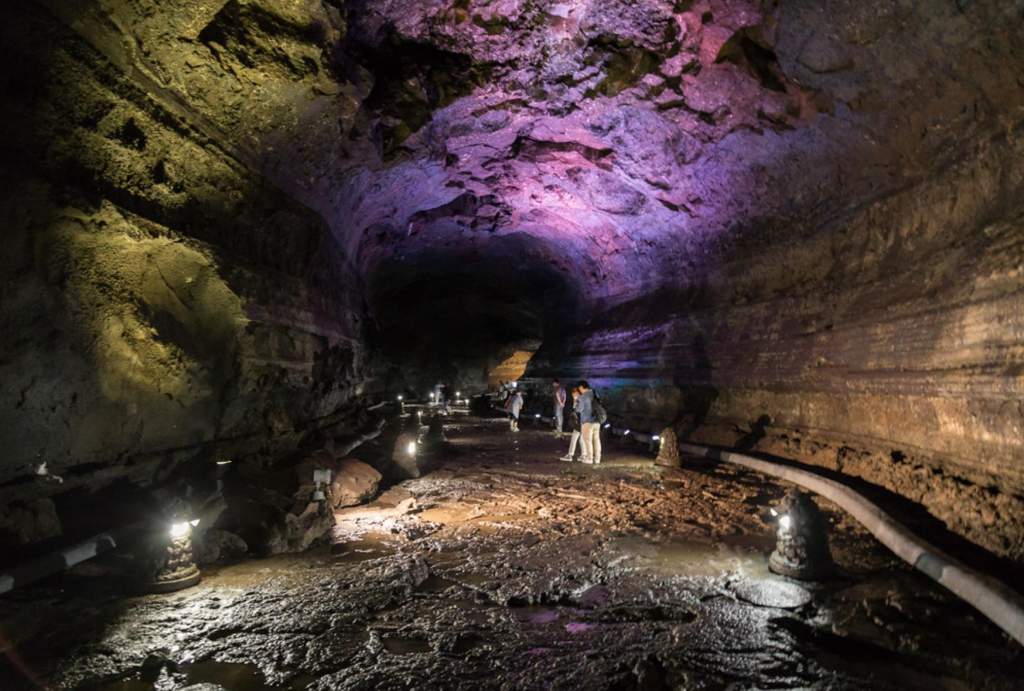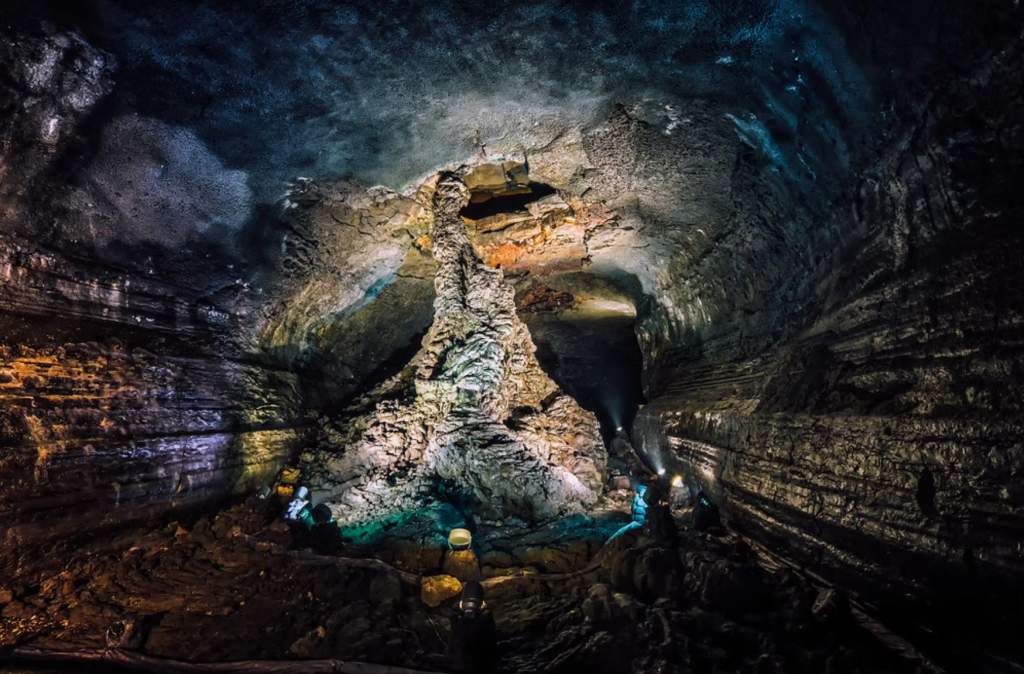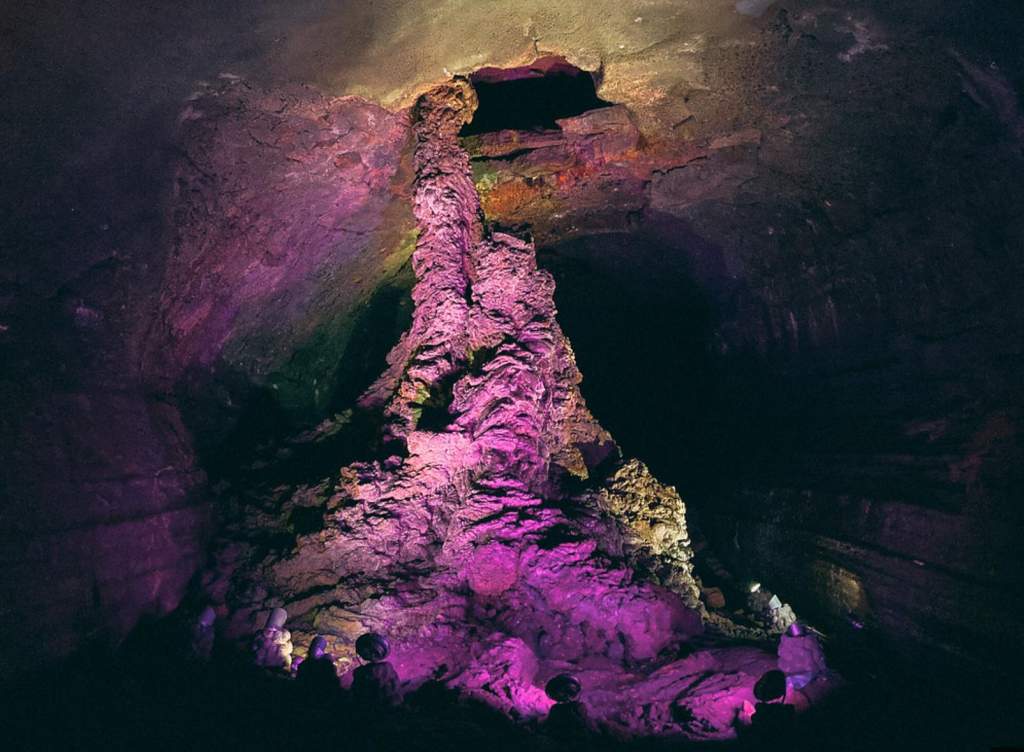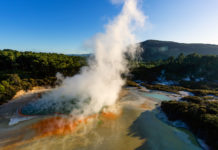Manjanggul Cave is a lava tube in Gimnyeong-ri, Gujwaeup, Jeju City, South Korea. Up to 23 meters wide, 30 meters tall, and 8.9 kilometers long. It is the world’s 12th-longest lava tube and the second-longest on Jeju Island, although a large portion of the cave is closed to visitors. This multilayer cave is the only one in the Geomunoreum Lava Tube System. It is widely regarded as one of the world’s greatest lava tube systems, and the local public regularly visits it.
Manjanggul cave is on the UNESCO World Heritage Site list under Jeju Volcanic Island and Lava Tubes. Manjanggul, with its well-preserved formations, has tremendous scientific and conservation value. The geologists believe this natural wonder was formed between 250,000 and 350,000 years ago when the gigantic 456-meter volcano Geomunoreum erupted. With a diverse array of rocks, the cave resembles an underground planet.
This cave has three entrances, although tourists enter through just one of them and go up to one kilometer into it. Within the unrestricted area of 1 kilometer, visitors can see different lava tubes and cave topographical features, including lava stalactites, lava stalagmites, and magnificent lava stone pillars. The tallest stone pillar in the world, standing at 7.6 meters, is located near the end of the exposed part. For tourist attractions, Manjanggul cave rocks are illuminated by multicolored lights, creating a spooky atmosphere in the cave.
Entrance No. 3 has the best habitat for cave life. A lower-level main tube connects entrances 1 and 2, housing most of the cave’s inhabitants. The Manjanggul Lava Tube is home to the most living animals in the Geomunoreum Lava Tube System, including the Jeju cave spider. At least 30,000 common bent-wing bats live in the upper half of Entrance 2, making it Korea’s largest bat colony to date. There are light systems along the path, but as a precaution, you should bring a torch because the lighting is inadequate in some parts. Moreover, the floor is wet and uneven, so grab onto the railings since you may slip.
Molten lava creates countless rock animal shapes, which are visually appealing and fascinating. The most notable examples are Turtle Rock and the massive lava column. Turtle Rock gets its name from its turtle-like shape, which is very similar to the shape of Jeju Island. In addition to the vibrant rocks, the verdant vegetation here provides a sense of renewal and calm.
